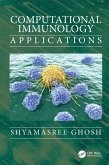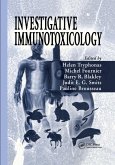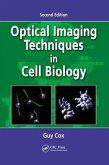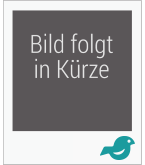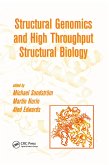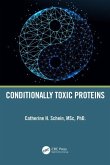Lung Biology and Pathophysiology
Herausgeber: Zhao, Yutong
Lung Biology and Pathophysiology
Herausgeber: Zhao, Yutong
- Gebundenes Buch
- Merkliste
- Auf die Merkliste
- Bewerten Bewerten
- Teilen
- Produkt teilen
- Produkterinnerung
- Produkterinnerung
The lungs are the organ for gas exchange between the body and the external environment. This book contributes to the understanding homeostasis of lung cells in the physiological and pathological conditions critical to the development of novel therapeutics.
Andere Kunden interessierten sich auch für
![Computational Immunology Computational Immunology]() Shyamasree GhoshComputational Immunology179,99 €
Shyamasree GhoshComputational Immunology179,99 €![Investigative Immunotoxicology Investigative Immunotoxicology]() Investigative Immunotoxicology78,99 €
Investigative Immunotoxicology78,99 €![Optical Imaging Techniques in Cell Biology Optical Imaging Techniques in Cell Biology]() Guy CoxOptical Imaging Techniques in Cell Biology101,99 €
Guy CoxOptical Imaging Techniques in Cell Biology101,99 €![Trace Metals Selenium, Chromium and Vanadium Chemistry, Biology & Human Health Trace Metals Selenium, Chromium and Vanadium Chemistry, Biology & Human Health]() Bimal Krishna BanikTrace Metals Selenium, Chromium and Vanadium Chemistry, Biology & Human Health225,99 €
Bimal Krishna BanikTrace Metals Selenium, Chromium and Vanadium Chemistry, Biology & Human Health225,99 €![Hematopoietic Stem Cell Transplantation and Cellular Therapies for Autoimmune Diseases Hematopoietic Stem Cell Transplantation and Cellular Therapies for Autoimmune Diseases]() Hematopoietic Stem Cell Transplantation and Cellular Therapies for Autoimmune Diseases256,99 €
Hematopoietic Stem Cell Transplantation and Cellular Therapies for Autoimmune Diseases256,99 €![Structural Genomics and High Throughput Structural Biology Structural Genomics and High Throughput Structural Biology]() Structural Genomics and High Throughput Structural Biology80,99 €
Structural Genomics and High Throughput Structural Biology80,99 €![Conditionally Toxic Proteins Conditionally Toxic Proteins]() Catherine H. ScheinConditionally Toxic Proteins124,99 €
Catherine H. ScheinConditionally Toxic Proteins124,99 €-
-
-
The lungs are the organ for gas exchange between the body and the external environment. This book contributes to the understanding homeostasis of lung cells in the physiological and pathological conditions critical to the development of novel therapeutics.
Produktdetails
- Produktdetails
- Verlag: CRC Press
- Seitenzahl: 292
- Erscheinungstermin: 20. Februar 2024
- Englisch
- Abmessung: 260mm x 183mm x 20mm
- Gewicht: 748g
- ISBN-13: 9781032409023
- ISBN-10: 1032409029
- Artikelnr.: 69483012
- Herstellerkennzeichnung
- Libri GmbH
- Europaallee 1
- 36244 Bad Hersfeld
- gpsr@libri.de
- Verlag: CRC Press
- Seitenzahl: 292
- Erscheinungstermin: 20. Februar 2024
- Englisch
- Abmessung: 260mm x 183mm x 20mm
- Gewicht: 748g
- ISBN-13: 9781032409023
- ISBN-10: 1032409029
- Artikelnr.: 69483012
- Herstellerkennzeichnung
- Libri GmbH
- Europaallee 1
- 36244 Bad Hersfeld
- gpsr@libri.de
Yutong Zhao is a Professor of Physiology and Cell Biology at The Ohio State University. He received his clinical medical degree from Dalian Medical University in China and PhD degree from Gifu University School of Medicine in Japan. He was trained in biochemistry, molecular biology, and active lipid signaling during his PhD student period. He joined a pulmonary postdoctoral training program at Johns Hopkins University School of Medicine and received his first NIH R01 funding at the University of Chicago as a Research Assistant Professor. Dr. Zhao is an expert in research fields of lung biology, bioactive lysophospholipid, and protein ubiquitination. His research focuses on investigating the pathogenesis of lung diseases including acute respiratory distress syndrome, pulmonary fibrosis, pulmonary arterial hypertension, asthma, lung cancer, and COPD. The goal of Dr. Zhao's laboratory research is to develop new therapeutic targets for treating lung diseases. Dr. Zhao is active in academic professional services as a reviewer, associate editor, and member of editorial boards of scientific journals and grant review study sections.
Part I: Lung Health and Pulmonary Diseases. Chapter 1. Antimicrobial
Peptides in Lung Health and Pulmonary Diseases. Chapter 2. Alveolar
Epithelium in Lung Injury and Repair. Chapter 3. Environmental Toxicants in
Lung Diseases. Chapter 4. Epigenetic Modifications of Histone in Lung
Fibrosis. Chapter 5. Translational Potential of Hypoxia-inducible factor-2¿
Signaling in Pulmonary Hypertension. Part II: Research Strategies and
Methods in Lung Biology and Pathophysiology. Chapter 6. Utility of Lung
Organoids to Accelerate Our Understanding of Human Pulmonary Development
and Diseases. Chapter 7. Establishment of Animal Models of Pulmonary
Fibrosis. Chapter 8. Research Strategies for Investigating Protein
Ubiquitination in Lung Diseases. Chapter 9. Peroxidative Metabolism of Lung
Lipids in Pulmonary Health and Disease: Emphasis on Methods of Analysis of
Oxidative Modification of Polyunsaturated Membrane Phospholipids. Part III:
Pathogenesis and Therapies of COVID-19. Chapter 10. Renin-Angiotensin
System (RAS) and COVID-19: Exploring the Impact, Inhibition, and Treatment
Strategies. Chapter 11. COVID-19 Therapeutics: Challenges and
Opportunities. Chapter 12. Clinical manifestations and pathogenesis of
COVID-19 pulmonary disease. Part IV: Traditional Chinese Medicine in Lung
Diseases. Chapter 13. Pulmonary Diseases and Traditional Chinese Medicine.
Peptides in Lung Health and Pulmonary Diseases. Chapter 2. Alveolar
Epithelium in Lung Injury and Repair. Chapter 3. Environmental Toxicants in
Lung Diseases. Chapter 4. Epigenetic Modifications of Histone in Lung
Fibrosis. Chapter 5. Translational Potential of Hypoxia-inducible factor-2¿
Signaling in Pulmonary Hypertension. Part II: Research Strategies and
Methods in Lung Biology and Pathophysiology. Chapter 6. Utility of Lung
Organoids to Accelerate Our Understanding of Human Pulmonary Development
and Diseases. Chapter 7. Establishment of Animal Models of Pulmonary
Fibrosis. Chapter 8. Research Strategies for Investigating Protein
Ubiquitination in Lung Diseases. Chapter 9. Peroxidative Metabolism of Lung
Lipids in Pulmonary Health and Disease: Emphasis on Methods of Analysis of
Oxidative Modification of Polyunsaturated Membrane Phospholipids. Part III:
Pathogenesis and Therapies of COVID-19. Chapter 10. Renin-Angiotensin
System (RAS) and COVID-19: Exploring the Impact, Inhibition, and Treatment
Strategies. Chapter 11. COVID-19 Therapeutics: Challenges and
Opportunities. Chapter 12. Clinical manifestations and pathogenesis of
COVID-19 pulmonary disease. Part IV: Traditional Chinese Medicine in Lung
Diseases. Chapter 13. Pulmonary Diseases and Traditional Chinese Medicine.
Part I: Lung Health and Pulmonary Diseases. Chapter 1. Antimicrobial
Peptides in Lung Health and Pulmonary Diseases. Chapter 2. Alveolar
Epithelium in Lung Injury and Repair. Chapter 3. Environmental Toxicants in
Lung Diseases. Chapter 4. Epigenetic Modifications of Histone in Lung
Fibrosis. Chapter 5. Translational Potential of Hypoxia-inducible factor-2¿
Signaling in Pulmonary Hypertension. Part II: Research Strategies and
Methods in Lung Biology and Pathophysiology. Chapter 6. Utility of Lung
Organoids to Accelerate Our Understanding of Human Pulmonary Development
and Diseases. Chapter 7. Establishment of Animal Models of Pulmonary
Fibrosis. Chapter 8. Research Strategies for Investigating Protein
Ubiquitination in Lung Diseases. Chapter 9. Peroxidative Metabolism of Lung
Lipids in Pulmonary Health and Disease: Emphasis on Methods of Analysis of
Oxidative Modification of Polyunsaturated Membrane Phospholipids. Part III:
Pathogenesis and Therapies of COVID-19. Chapter 10. Renin-Angiotensin
System (RAS) and COVID-19: Exploring the Impact, Inhibition, and Treatment
Strategies. Chapter 11. COVID-19 Therapeutics: Challenges and
Opportunities. Chapter 12. Clinical manifestations and pathogenesis of
COVID-19 pulmonary disease. Part IV: Traditional Chinese Medicine in Lung
Diseases. Chapter 13. Pulmonary Diseases and Traditional Chinese Medicine.
Peptides in Lung Health and Pulmonary Diseases. Chapter 2. Alveolar
Epithelium in Lung Injury and Repair. Chapter 3. Environmental Toxicants in
Lung Diseases. Chapter 4. Epigenetic Modifications of Histone in Lung
Fibrosis. Chapter 5. Translational Potential of Hypoxia-inducible factor-2¿
Signaling in Pulmonary Hypertension. Part II: Research Strategies and
Methods in Lung Biology and Pathophysiology. Chapter 6. Utility of Lung
Organoids to Accelerate Our Understanding of Human Pulmonary Development
and Diseases. Chapter 7. Establishment of Animal Models of Pulmonary
Fibrosis. Chapter 8. Research Strategies for Investigating Protein
Ubiquitination in Lung Diseases. Chapter 9. Peroxidative Metabolism of Lung
Lipids in Pulmonary Health and Disease: Emphasis on Methods of Analysis of
Oxidative Modification of Polyunsaturated Membrane Phospholipids. Part III:
Pathogenesis and Therapies of COVID-19. Chapter 10. Renin-Angiotensin
System (RAS) and COVID-19: Exploring the Impact, Inhibition, and Treatment
Strategies. Chapter 11. COVID-19 Therapeutics: Challenges and
Opportunities. Chapter 12. Clinical manifestations and pathogenesis of
COVID-19 pulmonary disease. Part IV: Traditional Chinese Medicine in Lung
Diseases. Chapter 13. Pulmonary Diseases and Traditional Chinese Medicine.



